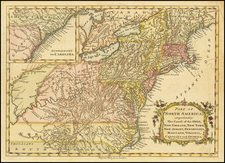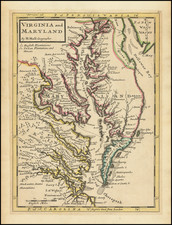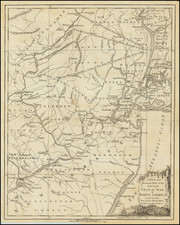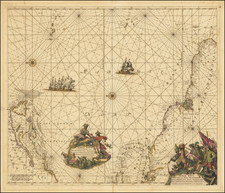Remarkable manuscript map by James Charles Sidney, one of the most famous landscape architects of the period. The map inlcudes 11 lots just north of the present Chestnut Hill Hospital and Bethlehem Turnpike. The area depicted includes parts of Montgomery Avenue (unnamed), Hillbrow Avenue (unnamed), Birch Lane (unnamed), Stenton Avenue (then called County Line Road), East Evergreen Avenue (unnamed), Summit Street (unnamed), E. Graver's Lane (unnamed) and Page Mill Road (then called Willow Grove Road). The map would appear to have been prepared for W. Platt Esq., as this is the one lot which includes significant landscape detail, including a fish pond, kitchen garden, main house, servant's house and long drive. The owners of some of the other 10 lots are noted in pencil, including W.C. Taylor, D. Pepper, and C.G. Childs (3 lots). James Charles Sidney was an architect, engineer, surveyor, and landscape architect born in England. In the early 1840s, he was employed by John Jay Smith, Librarian of the Library Company of Philadelphia, as a cartographer. During this time, Sidney also for Smith's son, Robert Pearsall Smith, one of the most prolific American map publishers of the mid-nineteenth century. During this time period, he produced his two most famous printed maps, Sidney's Map of Ten Miles Around -- Map of the Circuit of Ten Miles around the City of Philadelphia (1847) and Map of the Township of Germantown with the Names of the Property Holders (c.1848) In the mid-1840s Sidney also executed six plates published in Thomas Ustick Walter and Smith's Two Hundred Designs for Cottages and Villas (Philadelphia: Carey and Hart, 1846; second edition, 1847). Sidney's earliest known architectural works date from the mid-1840s. By 1849, he listed himself in the Philadelphia city directory as a civil engineer. In 1850-1851 he formed a partnership with James P. W. Neff, engineers and architects, at 80 Walnut Street. Also at this Sidney produced his most important publication, American Cottage and Villa Architecture (New York: D. Appleton & Co., 1850). The Sidney & Neff partnership dissolved in 1854-1855, and Sidney moved to New York City to work for Robert Pearsall Smith. He returned to Philadelphia in 1857-1858 and shortly thereafter entered into another brief partnership (1859-1860) with Andrew Adams, rural architects, engineers and surveyors. Particular attention paid to building and laying out of country seats, cemeteries and public grounds. Surveys and plans made for every kind of building or work requiring knowledge of engineering, at 520 Walnut Street. The most important work of this short-lived partnership was a master plan for Fairmount Park, adopted in 1859, the same year that an article in The Gardener's Monthly touted Sidney as the best landscape-gardener, perhaps in the country. (Gardener's Monthly 1 November 1859). Later, Sidney changed partners again, joining Frederick C. Merry in a partnership that lasted until 1864-1865. Sidney & Merry continued the Fairmount Park work and designed a number of houses in the expanding Chestnut Hill area of suburban Philadelphia. The remainder of his career was spent on the design of schools for the Controllers of the Public Schools of Philadelphia. A bit of chipping to the edges, but still a very nice example Smith's early work. Minor marginal chipping (see image) and some soiling. A few extraneous pencil notes. Original linen, with one vertical fold.
Sign In
This item has been sold, but you can enter your email address to be notified if another example becomes available.
Stock# 11800
Description









![[ First Map of Pennsylvania Province ] A Map of the Province of Pensilvania Drawn from the Best Authorities By T. Kitchin Gr.](https://storage.googleapis.com/raremaps/img/small/98226.jpg)


![Notes on the State of Virginia [with the map:] A Map of the country between Albemarle Sound, and Lake Erie, comprehending the whole of Virginia, Maryland, Delaware, and Pensylvania, with parts of several other of the United States of America. Engraved for the Notes on Virginia.](https://storage.googleapis.com/raremaps/img/small/55181.jpg)

